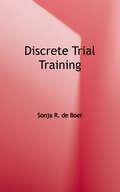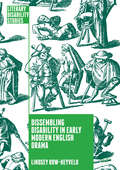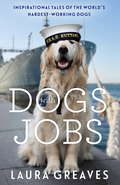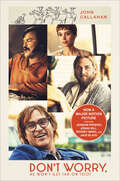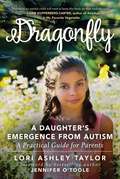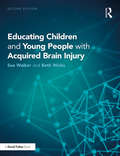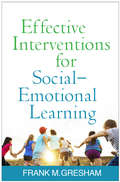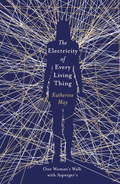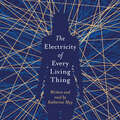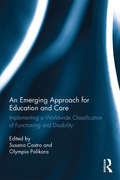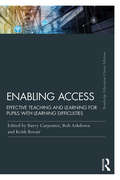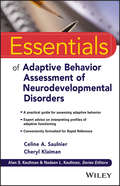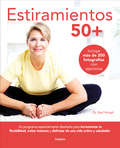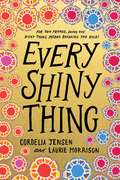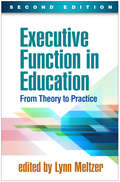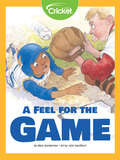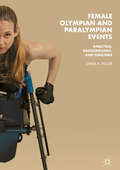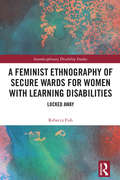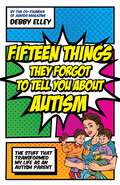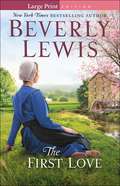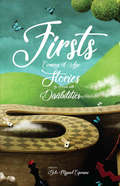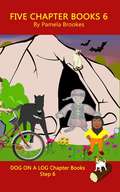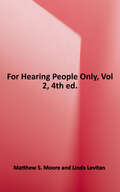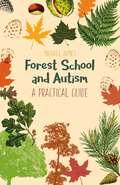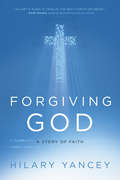- Table View
- List View
Discrete Trial Training
by Sonja R. DeBoerDiscrete trial training (DTT) is a method of teaching individuals with autism spectrum disorder (ASD) based on applied behavior analysis (ABA). Skills are broken into discrete steps and then taught in massed trials. With DTT, steps are taught one at a time, instead of teaching an entire skill all at once. Concepts covered include errorless learning, methods of reinforcement, and how to use behavior momentum. The text explains how to collect, interpret, and use data to make teaching decisions. Finally, the text details a method for evaluating implementation of DTT.
Dissembling Disability in Early Modern English Drama (Literary Disability Studies)
by Lindsey Row-HeyveldWhy do able-bodied characters fake disability in 40 early modern English plays? This book uncovers a previously unexamined theatrical tradition and explores the way counterfeit disability captivated the Renaissance stage. Through detailed case studies of both lesser-known and canonical plays (by Shakespeare, Jonson, Marston, and others), Lindsey Row-Heyveld demonstrates why counterfeit disability proved so useful to early modern playwrights. Changing approaches to almsgiving in the English Reformation led to increasing concerns about feigned disability. The theater capitalized on those concerns, using the counterfeit-disability tradition to explore issues of charity, epistemology, and spectatorship. By illuminating this neglected tradition, this book fills an important gap in both disability history and literary studies, and explores how fears of counterfeit disability created a feedback loop of performance and suspicion. The result is the still-pervasive insistence that even genuinely disabled people must perform in order to, paradoxically, prove the authenticity of their impairments.
Dogs With Jobs: Inspirational Tales of the World’s Hardest-Working Dogs
by Laura GreavesMeet Molly Polly, the diabetes alert dog whose round-the-clock job is to keep her two young owners healthy; Bailey, the Assistant Director of Seagulls, who keeps the pesky birds away from the heritage vessels at the Australian National Maritime Museum; and Daisy, the Collie mix who's a full-time guide dog for another dog. From inspirational moments of bravery to dogs doing the jobs that no one else can, these are the life-affirming stories of the most remarkable dogs on the planet.
Don't Worry, He Won't Get Far on Foot
by John F. CallahanNow a major motion picture directed by Gus Van Sant and starring Joaquin Phoenix, Jonah Hill, and Rooney MaraFeaturing more than 60 of Callahan's original cartoons“When people laugh like hell and then say, ‘That’s not funny,’ you can be pretty sure they’re talking about John Callahan.”— P.J. O’RourkeIn 1972, at the age of 21, John Callahan was involved in a car crash that severed his spine and made him a quadriplegic. A heavy drinker since the age of 12 (alcohol had played a role in his crash), the accident could have been the beginning of a downward spiral. Instead, it sparked a personal transformation. After extensive physical therapy, he was eventually able to grasp a pen in his right hand and make rudimentary drawings. By 1978, Callahan had sworn off drinking for good, and begun to draw cartoons.Over the next three decades, until his death in 2010, Callahan would become one of the nation’s most beloved—and at times polarizing—cartoonists. His work, which shows off a wacky and sometimes warped sense of humor, pokes fun at social conventions and pushes boundaries. One cartoon features Christ at the cross with a thought bubble reading “T.G.I.F.” In another, three sheriffs on horseback approach an empty wheelchair in the desert. “Don’t worry,” one sheriff says to another, “He won’t get far on foot.”Don’t Worry, He Won’t Get Far on Foot recounts Callahan’s life story, from the harrowing to the hilarious. Featuring more than 60 of Callahan’s cartoons, it’s a compelling look at art, addiction, disability, and fame. A film adaptation scheduled for 2018, starring Joaquin Phoenix as John Callahan, will bring fresh attention to this underappreciated classic.
Dragonfly: A Daughter's Emergence from Autism: A Practical Guide for Parents
by Tori Ashley Taylor Jennifer O'TooleA parent's guide to helping children with autism maximize their potential. Over a decade ago, an autism diagnosis had confined Lori Ashley Taylor's daughter Hannah to an inaccessible world. Lori became a tireless researcher, worker, and advocate, and her dedication showed results. There can be progression and shifting on the spectrum, and Hannah has done just that—she has emerged. Part narrative and part practical guide, Dragonfly provides anecdotal and practical guidance for parents of children with autism spectrum disorder. The author discusses intervention strategies, therapies such as Applied Behavioral Analysis (ABA), and different medical tests. She explains Autism terminology like hyperresponsivesness and stimming. A classroom teacher herself, she recommends educational accommodations and supports. Busy parents can find practical tips on everything from making friends to Sensory Processing Disorder in helpful sidebars in the text. Taylor's personal experience is supplemented by wisdom from a series of round table discussions featuring other parents of children with autism. In the summer of 2013, eight-year-old Hannah wrote "Life of a Dragonfly," a poem with repeated parallel stanzas that used the stages of a dragonfly's life as a mirror for her own physical and cognitive development. Among its wisdom was: "Hope rises, and I begin to reveal my concealed wings. I begin to understand language and what I am meant to do." Taylor has helped her daughter find her wings; in Dragonfly, she gives other parents the tools to do the same.
Educating Children and Young People with Acquired Brain Injury
by Sue Walker Beth WicksEducating Children with Acquired Brain Injury is an authoritative resource book on the effects of brain injury on young people and how educators can understand and support their needs. This new edition has been updated to reflect changes to legislation and practice relating to special educational needs and will enable you to maximise the learning opportunities for young people with acquired brain injury (ABI). Considering key areas in special educational needs such as communication, interaction, cognition, sensory and physical needs, the book provides information on the multifaceted needs of children and young people with ABI and how these needs can be met. This book will help you to: Understand the difficulties that young people with ABI experience Support these students by using appropriate strategies to help their learning Understand and address the social and emotional difficulties experienced by these students Work in partnership with families and other professionals Understand information from other professionals by reference to a glossary of terms Access further useful information from relevant resources and organisations Written for SENCOs, teachers, teaching assistants, educational psychologists and other education professionals across all settings, Educating Children with Acquired Brain Injury is full of useful information and advice for parents and other family members, clinical and behavioural psychologists, therapists and support workers involved with children and young people with ABI.
Effective Interventions for Social-Emotional Learning
by Frank M. GreshamThis book reviews evidence-based, multi-tiered practices for promoting social-emotional learning (SEL) with typically developing students as well as those with special needs. Leading authority Frank M. Gresham, codeveloper of the Social Skills Improvement System--Rating Scales, describes how to systematically assess K-12 students' social skills and plan and implement universal, selected, and intensive interventions. His approach is grounded in cutting-edge research on social-emotional competencies and their role in adjustment and academic achievement. Emphasizing what works, the book showcases programs and strategies that are sequenced, active, focused, and explicit. Detailed case examples and lesson plans illustrate different levels and types of SEL intervention. Reproducible assessment tools can be downloaded and printed in a convenient 8 1/2" x 11" size.
The Electricity of Every Living Thing: A Woman’s Walk in the Wild to Find Her Way Home
by Katherine MayPerfect for fans of The Salt Path and The Outrun, this book is a life-affirming exploration of wild landscapes, what it means to be different and, above all, how we can all learn to make peace within our own unquiet minds.'A windswept tale, beautifully told' Raynor Winn - The Salt Path 'A manifesto for the value of difficult people. I loved it' Amy Liptrot - The OutrunIn August 2015, Katherine May set out to walk the 630-mile South West Coast Path. She wanted to understand why she had stopped coping with everyday life; why motherhood had been so overwhelming and isolating, and why the world felt full of inundation and expectations she can't meet. Setting her feet down on the rugged and difficult path by the sea, the answer begins to unfold. It's a chance encounter with a voice on the radio that sparks a realisation that she has Asperger's Syndrome. The Electricity of Every Living Thing tells the story of the year in which Katherine comes to terms with her diagnosis. It leads to a re-evaluation of her life so far - a kinder one, which finally allows her to be different rather than simply awkward, arrogant or unfeeling. The physical and psychological journeys become inextricably entwined, and as Katherine finds her way across the untameable coast, she also finds the way to herself.What readers are saying about The Electricity of Every Living Thing:'This book showed a realistic view of how autism feels to some people, and it's explained so well''The astonishing sensitivity and awareness in her writing, both about the beautiful landscapes and nature around on her walks, and in relation to her family, friends and self put paid to many outdated myths about what it is like to be autistic''Compelling and transformative'
The Electricity of Every Living Thing: A Woman's Walk in the Wild to Find Her Way Home
by Katherine MayLast summer, Katherine May was approaching 40, feeling overwhelmed by motherhood and lacking connection with others, lost in a world of inundation and expectation. She had always felt different but this feeling was new. She wanted to get out, get free and find herself again - and so set about walking the rugged 450 mile South West Coast Path. However, this journey uncovers more than she ever imagined. By chance, en route to the walk, Katherine hears a radio show and the guests are speaking about Asperger's Syndrome. Things begin to fall into place - could this explain the white-outs, the excruciating confusion around social contact, the electric feeling of every living thing?After a formal diagnosis, Katherine begins to unravel this new perspective of her life. Through her physical journey comes an emotional one - of accepting who she is and moving forward. It's not just about walking or Asperger's; this is one woman's journey to feel free within herself, something that everyone can relate to.Read by Nathalie Buscombe(p) Orion Publishing Group 2018
An Emerging Approach for Education and Care: Implementing a Worldwide Classification of Functioning and Disability
by Susana Castro Olympia PalikaraAn Emerging Approach for Education and Care provides a synthesis of the extensive research that has been conducted worldwide about the International Classification of Functioning, Disability and Health for Children and Youth in education and care. The main purpose of the ICF is to provide a classification of functioning for adults and children with difficulties, considering their everyday lives, all the activities they perform and the environments they are embedded in, in addition to their health condition, which has been the traditional focus of Special Education provision in many countries. Each chapter presents an evidence-based study describing how the ICF has been used to improve the provision of services for children and young people with Special Educational Needs around the world. Moreover, each chapter is written by an expert on the ICF from a different country, thus providing an overview of how the ICF can be applied in international educational contexts with different educational and health systems and cultural backgrounds. This synthesis of world-leading research focuses on the ICF as a framework to approach assessment, intervention and classification for children and young people with SEN, whilst also providing practical examples of how it can be implemented. An Emerging Approach for Education and Care will be essential reading for academics, researchers and practitioners working on Special Educational Needs provision and rehabilitation. It should also be of great interest to those involved in the study of early childhood education, and for postgraduate students aspiring to work in these settings.
Enabling Access: Effective Teaching and Learning for Pupils with Learning Difficulties
by Barry Carpenter Rob Ashdown Keith BovairThis Routledge Classic Edition brings together widely experienced editors and contributors to show how access to a whole school curriculum can be provided for learners with moderate to profound and multiple learning difficulties. Along with a new appraisal of the contents from the editors, the contributors raise debates, illustrate effective teaching ideas and discuss strategies for providing a high-quality education for these pupils and a celebration of their achievements. The book also discusses the active involvement of family members and the learners themselves in these processes and considers issues surrounding empowerment of learners, professional development of the workforce and curriculum principles such as differentiation, personalisation, and engagement. Winner of the prestigious nasen/TES Academic Book Award in 1996, Enabling Access is an essential read for students and lecturers in higher education, and for teachers, support staff, and other professionals in all educational settings in the UK and abroad catering for these learners.
Essentials of Adaptive Behavior Assessment of Neurodevelopmental Disorders (Essentials of Psychological Assessment)
by Celine A. Saulnier Cheryl KlaimanA practical guide to adaptive behaviors across a range of neurodevelopmental disorders Adaptive behavior assessment measures independent living skills, including communication, social skills, personal care, and practical work skills. For individuals with intellectual disabilities, evaluation of these skills is a critical tool for measuring eligibility and can identify specific skills that must be learned before effective educational interventions can be implemented. Essentials of Adaptive Behavior Assessment of Neurodevelopmental Disorders describes the role of adaptive behavior in assessment and treatment, and provides clear guidance for measurement. Case samples provide real-world illustration of behaviors and assessment, and systematic comparison of various measures are presented and explained to better inform planning. Individual chapters outline specific adaptive behaviors across a range of neurodevelopmental disorders, giving clinicians, practitioners, students, and researchers a better understanding of diagnostic differentials and how to place independent skill programming in treatment and intervention. Plan intervention and treatment based on accessible measurement guidelines across a range of disorders Gain a deeper understanding of adaptive functioning specific to ADHD, autism spectrum disorders, disruptive behavior disorders, and genetic disorders Compare and contrast current measures to evaluate their strengths, weaknesses, and areas of overlap Quickly locate essential information with Rapid Reference and Caution boxes For individuals with neurodevelopmental disorders, adaptive behaviors are the keys to independence; without them, these individuals will perpetually struggle with achieving optimum independence without the basic skills needed to function at home, in school, and in the community. Assessment allows these skills to be factored in to treatment and intervention planning, and can help improve the outcomes of other intervention methods. Essentials of Adaptive Behavior Assessment of Neurodevelopmental Disorders clarifies the assessment of these important behaviors, helping clinicians make more informed decisions around diagnosis, education, and treatment planning.
Estiramientos 50+
by Dr Karl KnopfMejora tu flexibilidad, mejora tu salud. Un libro de ejercicios y rutinas de estiramientos para mantener un cuerpo sano y flexible pasados los 50. En Estiramientos +50 encontrarás más de 90 rutinas fáciles y seguras para mantener un cuerpo sano y flexible, sin importar la edad. Con solo diez minutos al día de práctica en casa, ayudarás a mejorar tu movilidad, sin dolor ni lesiones. Desde los calentamientos y flexiones más idóneos para el cuerpo hasta ejercicios con bandas elásticas, rodillos o fitballs: descubre los trucos clave para no dejar de estar en forma nunca.
Every Shiny Thing
by Cordelia Jensen Laurie MorrisonIn this beautifully constructed middle-grade novel, told half in prose and half in verse, Lauren prides herself on being a good sister, and Sierra is used to taking care of her mom. When Lauren’s parents send her brother to a therapeutic boarding school for teens on the autism spectrum and Sierra moves to a foster home in Lauren’s wealthy neighborhood, both girls are lost until they find a deep bond with each other. But when Lauren recruits Sierra to help with a Robin Hood scheme to raise money for autistic kids who don’t have her family’s resources, Sierra has a lot to lose if the plan goes wrong. Lauren must learn that having good intentions isn’t all that matters when you battle injustice, and Sierra needs to realize that sometimes, the person you need to take care of is yourself.
Executive Function in Education, Second Edition: From Theory to Practice
by Lynn MeltzerThis groundbreaking volume, now revised and updated, has given thousands of educators and clinicians a deeper understanding of executive function (EF) processes in typically developing children and those with learning difficulties and developmental disabilities. The book elucidates how PreK–12 students develop such key capacities as goal setting, organization, cognitive flexibility, working memory, and self-monitoring. Leading experts in education, neuroscience, and psychology explore the links between EF and academic performance and present practical applications for assessment and instruction. Exemplary practices for supporting students with EF difficulties in particular content areas--reading, writing, and math--are reviewed. New to This Edition *Expanded coverage of reading--chapters on recent fMRI research findings; working memory and reading; and self-regulation and reading comprehension. *Chapter on early childhood. *Chapter on embedding EF strategies in the curriculum *Updated throughout with a decade's worth of significant advances in research, theory, and educational best practices. See also Meltzer's authored book Promoting Executive Function in the Classroom, which provides easy-to-implement assessment tools, teaching techniques and activities, and planning aids.
A Feel for the Game
by John Sandford Myra SandermanCorey plays a special role on his baseball team—he’s their first deaf player! He and the coach communicate on the field by using sign language. Will Corey help the Northfield Huskies win the game and go on to the championship?
Female Olympian and Paralympian Events: Analyses, Backgrounds, and Timelines
by Linda K. FullerFemale Olympian and Paralympian Events is a groundbreaking book that examines women’s sports in the Olympic and Paralympic Games, which have long been underappreciated and under-analyzed. The book begins with a brief background on women’s participation in the Olympic Games and their role relative to the International Olympic Committee, then introduces the underlying Gendered Critical Discourse Analysis theory used throughout the book’s analysis before delving into a literature review of female Olympians and Paralympians’ events. It includes a listing of noteworthy “firsts” in the field, followed by individual discussions of twenty-eight Summer and seven Winter events, analyzed according to their historical, rhetorical, and popular cultural representations. Women’s unique role(s) in the various events are discussed, particular athletes and Paralympic events are highlighted, and original tables are also included. At the end of each section, affiliated organizations and resources are included in this invaluable referential volume.
A Feminist Ethnography of Secure Wards for Women with Learning Disabilities: Locked Away (Interdisciplinary Disability Studies)
by Rebecca FishWhat is life like for women with learning disabilities detained in a secure unit? This book presents a unique ethnographic study conducted in a contemporary institution in England. Rebecca Fish takes an interdisciplinary approach, drawing on both the social model of disability and intersectional feminist methodology, to explore the reasons why the women were placed in the unit, as well their experiences of day-to-day life as played out through relationships with staff and other residents. She raises important questions about the purpose of such units and the services they offer. Through making the women’s voices heard, this book presents their experiences and unique perspectives on topics such as seclusion, restraint, and resistance. Exploring how the ever present power disparity works to regulate women’s behaviour, the book shows how institutional responses replicate women’s bad experiences from the past, and how women’s responses are seen as pathological. It demonstrates that women are not passive recipients of care, but shape their own identity and futures, sometimes by resisting the norms expected of them (within allowed limits) and sometimes by transgressing the rules. These insights thus challenge traditional institutional accounts of gender, learning disability and deviance and highlight areas for reform in policy, practice, methodology, and social theory. This ground-breaking book will be of interest to scholars, students, policymakers and advocates working in the fields of learning disability and disability studies more widely, gender studies and sociology.
Fifteen Things They Forgot to Tell You About Autism: The Stuff That Transformed My Life as an Autism Parent
by Debby ElleyWhat if the things people need to know about autism is not the information they're getting? Combining myth-busting advice with personal experience, this book from the mother of autistic twins shares simple strategies to build children's confidence, communication, and independence. From sharing the joy of yodelling around shops at the weekend, to finding creative ways to communicate with both her verbal and her non-verbal sons, Debby Elley gives practical and fun tips for everyday living and shows that being autistic is just another way of being. Both witty and candid, the book discusses labels, meltdowns, acceptance, happiness and much more.
The First Love
by Beverly LewisIt's the summer of 1951, and Maggie Esh is in need of some hope. Sweet-spirite and uncommonly pretty despite struggling with illness, she is used to being treated kindly by the young men of her Old Order Amish church district. Yet Maggie wishes she were more like other courting-age girls so she could live a normal, healthy life. When tent revival meetings come to the area, the words of the preacher cause her to reconsider what she knows about faith. Can she learn to trust God even when hope seems a distant dream?
Firsts: Coming of Age Stories by People with Disabilities
by Belo Miguel CiprianiTake a step back in time with some of the best writers with disabilities as they recount their first adventure, their first heartbreak, and the first time the unexpected treaded into their life. From body transformations to societal setbacks, to love affairs and family trauma, Firsts collects the most thought-provoking and exciting stories of our time by people with disabilities. Contributors include Nigel David Kelly, Kimberly Gerry-Tucker, Caitlin Hernandez, Andrew Gurza, and David-Elijah Nahmod.
Five Chapter Books 6: Decodable Books for Phonics Readers and Dyslexia/Dyslexic Learners (DOG ON A LOG Chapter Books #Volume 6)
by Pamela BrookesDecodable Chapter Books for Phonics Readers and folks with a Dyslexic Learning Style. <P><P>This collection is the five books in Step 6 of the DOG ON A LOG Chapter book series. <P><P>The books are: <P><P>The Colt </br> The Gold Bolt </br> Hide In The Blinds </br> The Stone Child </br> Tolt The Kind Cat <P><P>Sight Words: </br> a, are, as, be, come, comes, could, do, does, for, from, go, goes, has, have, he, her, here, his, I, into, is, me, Ms., my, no, of, OK, onto, or, pull, pulls, push, put, puts, said, say, says, see, sees, she, should, so, some, talk, talks, the, their, there, they, to, walk, walks, want, wants, was, we, what, where, would, you, your, yours <P><P>Each book has about 1,390 to 2,000 total words <P><P>These are Step 6 Chapter books. <P><P>The DOG ON A LOG Books series are for phonics readers and folks with a dyslexic learning style. The words used reflect the inclusion of 1 to 3 new phonics rules in each step. There are five books at each step. <P><P>The chapter books are written in a chapter format with one picture in most chapters. They are longer, have more detail, and sometimes offer more complexity than the Let’s GO! Books. They’re great for practicing known and new phonics rules. They’re also just fun reading. <P><P>DOG ON A LOG Let’s GO! Books are shorter versions of DOG ON A LOG Chapter books. Let’s GO! books tell the same stories with about 8 pictures and only a few sentences per page. They’re perfect as an introduction to the new phonics rules or simply for fun reading for younger kids. <P><P>DOG ON A LOG Phonics Progression <P><P>Step 1: Consonants, primary sounds Short vowels Digraphs: ch, sh, th, wh, ck 2 and 3 sound words Possessive ‘s <P><P>Step 2: Bonus letters (f, l, s, z after short vowel) “all” –s suffix <P><P>Step 3: ang, ing, ong, ung, ank, ink, onk, unk <P><P>Step 4: Consonant Blends to make 4 sound words 3 and 4 sound words ending in –lk, -sk <P><P>Step 5: Digraph blends –nch to make 3 and 4 sound words Silent e, including "-ke" <P><P>Step 6: ild, old, olt, ind, ost <P><P>Step 7: 5 sounds in a closed syllable word plus suffix -s (crunch, slumps) 3 letter blends and up to 6 sounds in a closed syllable word (script, spring) <P><P>Step 8: Two syllable words with 2 closed syllables, not blends (sunset, chicken, unfit) <P><P>WATCH FOR MORE STEPS AND BOOKS COMING SOON <P><P>For information on upcoming books see dogonalogbooks.com or visit our Facebook page.
For Hearing People Only
by Matthew S. Moore Linda LevitanThis best-seller answers some of the most common questions about Deaf culture, the Deaf community, and how Deaf people communicate and live. The simple and entertaining question-and-answer format makes this book a good introduction to Deafness and Deaf studies and would make a great gift for hearing friends and associates. Expanded edition.
Forest School and Autism: A Practical Guide
by Michael JamesForest School's innovative outdoor approach offers specific benefits to learners with autism, including increased social skills, raised self-esteem and improved sensory function. This guide raises autism awareness amongst practitioners by providing practical and easy-to-follow advice for adapting Forest School activities for those with autism. For those coming from a mainstream Forest School background, the author offers an introduction to autism and shows what Forest School can offer people with autism - both children and adults - with first-person accounts that highlight its success with this group. The guide gives advice on the social and sensory benefits, offers practical advice on safety and on how to set up a Forest School and finally presents specific activities to be incorporated into practitioners' routines.
Forgiving God: A Story of Faith
by Hilary YanceyA young mother's life is forever changed and her faith in God is broken when her son in diagnosed with complex physical disabilities. Restore and grow your faith as you read about Hilary Yancey's personal journey back to God. Three months into her pregnancy with her first child, Hilary Yancey received a phone call that changed everything. As she learned the diagnosis-cleft lip and palate, a missing right eye, possible breathing complications-Hilary began to pray in earnest. Even in the midst of these findings, she prayed that God would heal her son. God could do a miracle unlike anything she had seen. Only when Hilary held her baby, Jack, in her arms for the first time did she realize God had given her something drastically different than what she had demanded. Hilary struggled to talk to God as she sat for six weeks beside Jack's crib in the NICU. She consented to surgeries and learned to care for a breathing tube and gastronomy button. In her experience with motherhood Hilary had become more familiar with the sound of her son's heart monitor than the sound of his heartbeat. Later, during surgeries and emergency trips back to the hospital with her crying, breathless boy, Hilary reproached the stranger God had become. Jack was different. Hilary was not the mother she once imagined. God was not who Hilary knew before. But she could not let go of one certainty-she could see the image of Christ in Jack's face. Slowly, through long nights of wrestling and longer nights of silence, Hilary cut a path through her old, familiar faith to the God behind it. She discovered that it is by walking out onto the water, where the firm ground gives way, that we can find him. And meeting Jesus, who rises with his scars to proclaim new life, is never what you once imagined.
